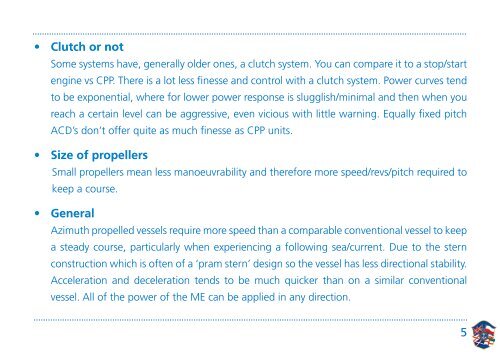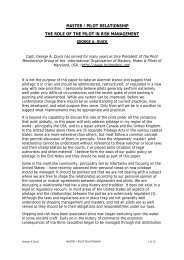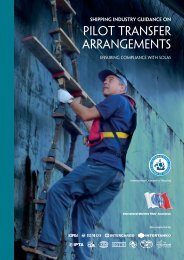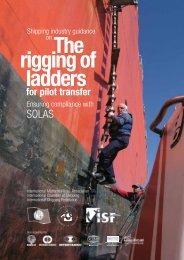Piloting Vessels Fitted With Azimuthing Control Devices (ACD’s)
Piloting Vessels Fitted With Azimuthing Control Devices (ACD's)
Piloting Vessels Fitted With Azimuthing Control Devices (ACD's)
You also want an ePaper? Increase the reach of your titles
YUMPU automatically turns print PDFs into web optimized ePapers that Google loves.
• Clutch or not<br />
Some systems have, generally older ones, a clutch system. You can compare it to a stop/start<br />
engine vs CPP. There is a lot less finesse and control with a clutch system. Power curves tend<br />
to be exponential, where for lower power response is slugglish/minimal and then when you<br />
reach a certain level can be aggressive, even vicious with little warning. Equally fixed pitch<br />
<strong>ACD’s</strong> don’t offer quite as much finesse as CPP units.<br />
• Size of propellers<br />
Small propellers mean less manoeuvrability and therefore more speed/revs/pitch required to<br />
keep a course.<br />
• General<br />
Azimuth propelled vessels require more speed than a comparable conventional vessel to keep<br />
a steady course, particularly when experiencing a following sea/current. Due to the stern<br />
construction which is often of a ‘pram stern’ design so the vessel has less directional stability.<br />
Acceleration and deceleration tends to be much quicker than on a similar conventional<br />
vessel. All of the power of the ME can be applied in any direction.<br />
5








